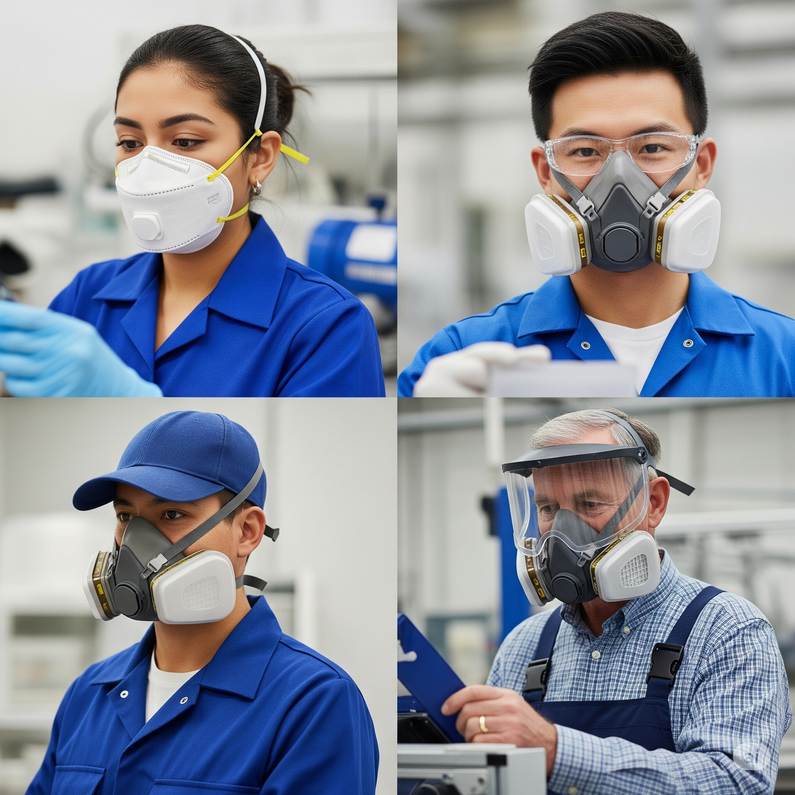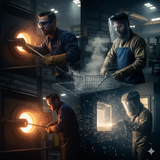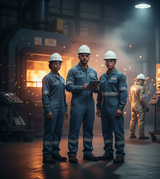Beyond the Basic Mask: A Comprehensive Guide to Respiratory Protection in the Workplace
In many workplaces, the air we breathe can contain invisible threats – from microscopic dust particles and irritating fumes to hazardous gases and vapors. While a simple cloth mask might offer some comfort, true respiratory protection is a complex, critical component of workplace safety. At Your Safety Company, we believe in empowering businesses to create environments where every breath is safe.
This guide goes beyond the basic mask to help you understand the comprehensive world of respiratory protection.
Why Respiratory Protection Isn't Just "Nice to Have"
Exposure to airborne contaminants can lead to a range of severe health issues, both immediate and long-term:
-
Acute Effects: Irritation to eyes, nose, throat; dizziness, nausea, shortness of breath.
-
Chronic Diseases: Asthma, bronchitis, emphysema, silicosis, asbestosis, and even certain cancers.
Proper respiratory protection is not just a regulatory requirement; it's a moral imperative to safeguard your team's health and ensure their long-term well-being.
Understanding Respiratory Hazards
Before choosing protection, you must identify the hazard. Airborne contaminants fall into a few broad categories:
-
Particulates: Dusts (wood, silica), mists, fumes (welding), smoke.
-
Gases & Vapors: Carbon monoxide, chlorine, ammonia, solvents, paints, glues.
-
Biological Hazards: Mold spores, bacteria, viruses.
-
Oxygen Deficiency: Environments with insufficient oxygen to sustain life.
The Right Tool for the Job: Types of Respirators
Not all masks are created equal. Respirators are classified based on how they protect you:
-
Air-Purifying Respirators (APRs): These remove contaminants from the air as you breathe.
-
Disposable Respirators (e.g., N95, N99, P100): Often referred to as "dust masks," these filter out particulates. An N95 filters at least 95% of airborne particles. They are single-use and do not protect against gases or vapors.
-
Reusable Half-Face Respirators: These cover the nose and mouth. They use replaceable cartridges and filters, which can be swapped out depending on the specific hazard (e.g., particulate filters, organic vapor cartridges, acid gas cartridges).
-
Reusable Full-Face Respirators: Similar to half-face but also provide eye and face protection. They offer a higher level of protection due to a tighter seal and larger filtration capacity.
-
-
Powered Air-Purifying Respirators (PAPRs): These use a battery-powered fan to draw air through a filter, providing a constant flow of purified air into a hood, helmet, or tight-fitting facepiece. They offer increased comfort and protection, especially for extended use or those who cannot wear tight-fitting respirators.
-
Supplied-Air Respirators (SARs): These provide breathing air from a clean source (e.g., a compressed air tank or compressor) via a hose. They are used in highly hazardous environments, including those that are oxygen-deficient or contain immediately dangerous to life or health (IDLH) contaminants. These are typically for specialized applications and highly trained personnel.
Essential Steps for Effective Respiratory Protection
Choosing the right respirator is only the first step. Proper use and maintenance are critical:
-
Hazard Assessment: Before anything else, identify the specific contaminants, their concentrations, and the oxygen level in your work environment. This dictates what type of respirator is needed.
-
Respirator Selection: Based on your hazard assessment, choose a respirator certified for that specific hazard level. Consider the Assigned Protection Factor (APF) to ensure adequate protection.
-
Fit Testing: For any tight-fitting respirator (disposable or reusable), a proper fit is paramount. Fit testing ensures a tight seal between the respirator's sealing surface and the wearer's face, preventing contaminants from leaking in. This is mandatory for OSHA compliance.
-
Training: All respirator users must be thoroughly trained on how to properly don (put on), doff (take off), inspect, clean, and store their specific respirator. They must also understand its limitations.
-
Maintenance & Storage: Reusable respirators require regular cleaning and proper storage to maintain their effectiveness. Filters and cartridges must be replaced according to manufacturer guidelines or when breakthrough occurs.
Compliance is Key
Adhering to standards like OSHA's Respiratory Protection Standard (29 CFR 1910.134) is non-negotiable. This standard covers all aspects of respiratory protection programs, from selection and medical evaluation to fit testing and training.
Your Partner in Respiratory Safety
Navigating the complexities of respiratory protection can be challenging, but you don't have to do it alone. At Your Safety Company, we offer a comprehensive range of high-quality respirators, filters, cartridges, and accessories designed to meet various workplace needs. Our experts can help you understand the options and equip your team with the right protection for their specific hazards.
Don't compromise on the air your team breathes. Explore our full selection of respiratory protection products today at yoursafetycompany.com, and empower your workplace with knowledge and the right gear.
Recent Posts
-
More Than Goggles: The Specialized Eye Protection Needed for High-Heat Industrial Environments
In facilities that process metal at extreme temperatures, eye safety is a complex, multi-layered cha …12th Nov 2025 -
Double Defense: Why Cut and Impact Protection is Critical for Material Handling
In facilities that deal with heavy metal parts, sharp edges, and complex machining, a standard work …11th Nov 2025 -
Beyond the Flame: Why NFPA 2112 FR Apparel is Non-Negotiable
In high-risk industrial settings—from petrochemical plants and utilities to metal processing and hea …7th Nov 2025



